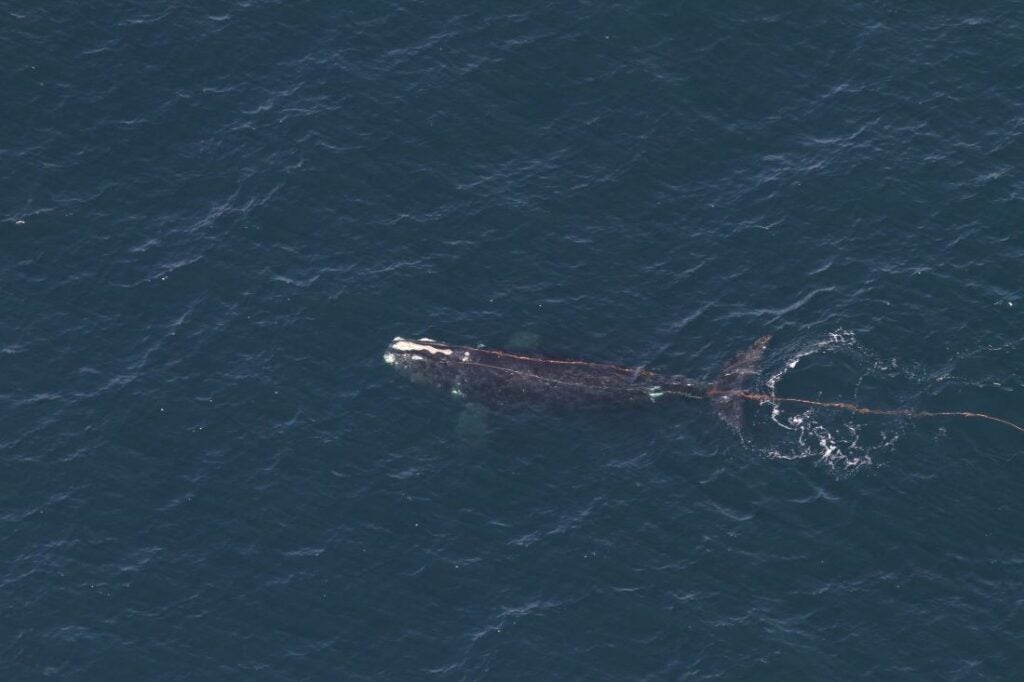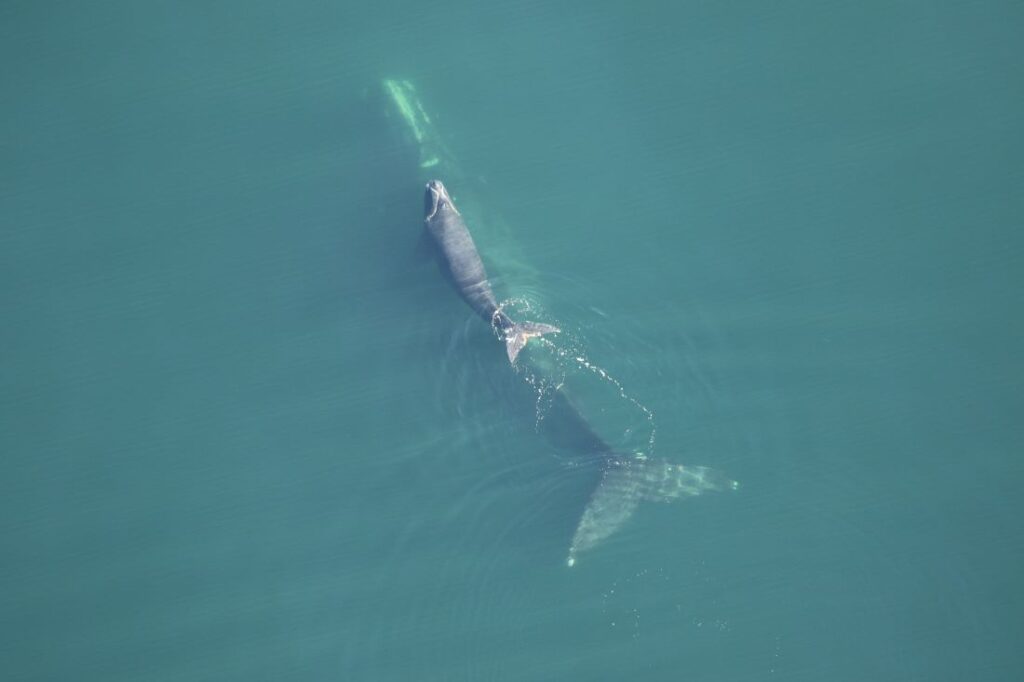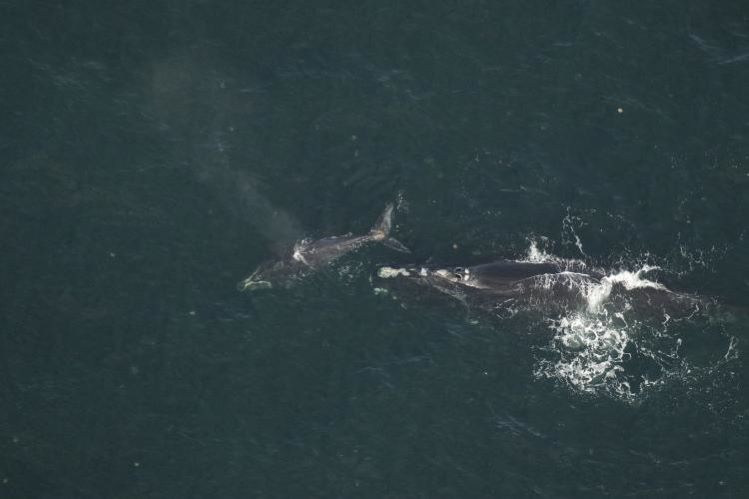October 24, 2024
From Numbers to Names: Why Naming Right Whales Matters
Estimated reading time: 0 minutes
BY: Vaishali Dassani
Do names like Salsa, Kilo, Tally, and Dumpling catch your attention? Or do Polaris, IIlex, and Burl intrigue you? These are just some of the creative names recently given to North Atlantic right whales. Now, compare how easily you remember these names versus numbers like 7857 or 1935 –which sticks with you more? While all right whales are given a unique ID number, it’s also important that they get a name. Naming whales creates a lasting impression and a personal connection to each individual, while helping scientists identify them, especially when they are in trouble or injured due to entanglement in fishing gear or ship strikes.
a right whale’s story; it’s all in the name
Right whales are mostly black in colour but they have unique white markings on their faces and undersides. They also have callosities—thick grey or white patches that form distinct patterns – which are as unique as human fingerprints. These markings allow scientists to tell individual whales apart. Sometimes, their names are inspired by these patterns, while other times they are named after their scars – markings from interactions with fishing gear or propellors on a ship. A right whale’s name offers a glimpse into their story and life experiences, from their physical features to the scars they have suffered from human threats.
Every year, the North Atlantic Right Whale Consortium lists 15-20 whales on their website, along with photos and descriptions of their markings. They invite the public to suggest names and then scientists select one. This year, they named 20 right whales.
north atlantic right whales named this year
Salsa – Right Whale #2201. This 32-year-old right whale male, has a callosity that is similar to Havana’s identifying callosity (right whale #3460) but reversed. Salsa, his new name, is inspired by the dance that is an integral part of Cuban culture and society, connecting him to the whale Havana. The letter L in “Salsa” notes the single island – or smaller callosity – on the left side of his larger callosity.

Kilo – Right Whale #4143: This 13-year-old male has scars on the left side of his head and left flank. The scars on the left side of his head are arranged in a “dash-dot-dash” pattern, which is a K in morse code. His new name, Kilo, was chosen because Kilo means K in the phonetic alphabet.
Dumpling – Right Whale #4970. This five-year-old female has a scar on her dorsal fluke, as well as a handful of callosities. Above her largest callosity, there is a double island – a smaller callosity – on the right side of her head that looks like a cute dumpling.
You can find the descriptions and pictures of all the newly named right whales here!
Other famous right whale names
Swallowtaill – Right Whale #3725. This 17-year-old calving female has a distinctive broken right lip callosity and has a scar on her right lip. The tips of her tail, or fluke, are white. Swallowtail’s broken lip callosity resembles a swallowtail butterfly’s tail. Her name is a tribute to her lineage – her mother is Butterfly, right whale #1425 – and Grand Manan Island’s iconic Swallowtail lighthouse.

Hopscotch – Right Whale #3820. This 16-year-old calving female has callosities and markings on her skin that resemble the spacing in the game hopscotch.

more about right whales
Found off the coasts of Canada and the U.S., North Atlantic right whales are one of the most endangered species on the planet. Sadly, there are only about 372 individuals left. They were once hunted nearly to extinction and today, their survival is threatened by fishing gear entanglements and ship collisions. Oceana is working hard to protect them. Find out more about our work and how you can help >>

